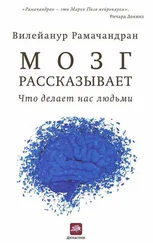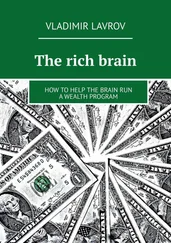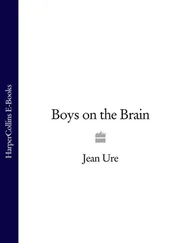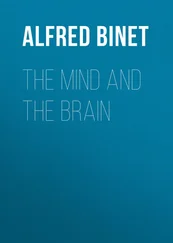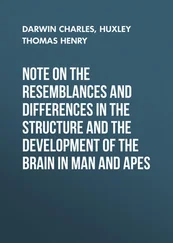Figure 2.3 Magnetoencephalography (MEG) image superimposed on a magnetic resonance (MR) image of the brain in a patient whose right arm was amputated below the elbow. The brain is viewed from the top. The right hemisphere shows normal activation of the hand (hatched), face (black) and upper arm (white) areas of the cortex corresponding to the Penfield map. In the left hemisphere there is no activation corresponding to the missing right hand, but the activity from the face and upper arm has now “spread” to this area.
On the basis of this tenuous reasoning, surgeons have devised various treatments for phantom limb pain in which they cut and remove neuromas. Some patients experience temporary relief, but surprisingly, both the phantom and the associated pain usually return with a vengeance. To alleviate this problem, sometimes surgeons perform a second or even a third amputation (making the stump shorter and shorter), but when you think about this, it’s logically absurd. Why would a second amputation help? You’d simply expect a second phantom, and indeed that’s usually what happens; it’s an endless regress problem.
Surgeons even perform dorsal rhizotomies to treat phantom limb pain, cutting the sensory nerves going into the spinal cord. Sometimes it works; sometimes it doesn’t. Others try the even more drastic procedure of cutting the back of the spinal cord itself — a cordotomy — to prevent impulses from reaching the brain, but that, too, is often ineffective. Or they will go all the way into the thalamus, a brain relay station that processes signals before they are sent to the cortex, and again find that they have not helped the patient. They can chase the phantom farther and farther into the brain, but of course they’ll never find it.
Why? One reason, surely, is that the phantom doesn’t exist in any one of these areas; it exists in more central parts of the brain, where the remapping has occurred. To put it crudely, the phantom emerges not from the stump but from the face and jaw, because every time Tom smiles or moves his face and lips, the impulses activate the “hand” area of his cortex, creating the illusion that his hand is still there. Stimulated by all these spurious signals, Tom’s brain literally hallucinates his arm, and perhaps this is the essence of a phantom limb.
If so, the only way to get rid of the phantom would be to remove his jaw. (And if you think about it, that wouldn’t help either. He’d probably end up with a phantom jaw. It’s that endless regress problem again.) But remapping can’t be the whole story. For one thing, it doesn’t explain why Tom or other patients experience the feeling of being able to move their phantoms voluntarily or why the phantom can change its posture. Where do these movement sensations originate? Second, remapping doesn’t account for what both doctor and patient are most seriously concerned about — the genesis of phantom pain. We’ll explore these two subjects in the next chapter.
When we think of sensations arising from skin we usually only think of touch. But, in fact, distinct neural pathways that mediate sensations of warmth, cold and pain also originate on the skin surface. These sensations have their own target areas or maps in the brain, but the paths used by them may be interlaced with each other in complicated ways. If so, could such remapping also occur in these evolutionarily older pathways quite independently of the remapping that occurs for touch? In other words, is the remapping seen in Tom and in Pons’s monkeys peculiar to touch, or does it point to a very general principle — would it occur for sensations like warmth, cold, pain or vibration? And if such remapping were to occur would there be instances of accidental “cross-wiring” so that a touch sensation would evoke warmth or pain? Or would they remain segregated? The question of how millions of neural connections in the brain are hooked up so precisely during development — and the extent to which this precision is preserved when they are reorganized after injury — is of great interest to scientists who are trying to understand the development of pathways in the brain.
To investigate this, I placed a drop of warm water on Tom’s face. He felt it there immediately but also said that his phantom hand felt distinctly warm. Once, when the water accidentally trickled down his face, he exclaimed with considerable surprise that he could actually feel the warm water trickling down the length of his phantom arm. He demonstrated this to me by using his normal hand to trace out the path of the water down his phantom. In all my years in neurology clinics, I had never seen anything quite so remarkable — a patient systematically mislocalizing a complex sensation such as a “trickle” from his face to his phantom hand.
These experiments imply that highly precise and organized new connections can be formed in the adult brain in a few days. But they don’t tell us how these new pathways actually emerge, what the underlying mechanisms are at the cellular level.
I can think of two possibilities. First, the reorganization could involve sprouting — the actual growth of new branches from nerve fibers that normally innervate the face area toward cells in the hand area in the cortex. If this hypothesis were true, this would be quite remarkable since it is difficult to see how highly organized sprouting could take place over relatively long distances (in the brain several millimeters might as well be a mile) and in such a short period. Moreover, even if sprouting occurs, how would the new fibers “know” where to go? One can imagine a higgledy-piggledy jumble of connections, but not precisely organized pathways.
The second possibility is that there is in fact a tremendous redundancy of connections in the normal adult brain but that most of them are nonfunctional or have no obvious function. Like reserve troops, they may be called into action only when needed. Thus even in healthy normal adult brains there might be sensory inputs from the face to the brain’s face map and to the hand map area as well. If so, we must assume that this occult or hidden input is ordinarily inhibited by the sensory fibers arriving from the real hand. But when the hand is removed, this silent input originating from the skin on the face is unmasked and allowed to express itself so that touching the face now activates the hand area and leads to sensations in the phantom hand. Thus every time Tom whistles, he might feel a tingling in his phantom arm.
We have no way at present of easily distinguishing between these two theories, although my hunch is that both mechanisms are at work. After all, we had seen the effect in Tom in less than four weeks and this seems too short a time for sprouting to take place. My colleague at the Massachusetts General Hospital Dr. David Borsook 9 has seen similar effects in a patient just twenty-four hours after amputation, and there is no question of sprouting’s occurring in such a short period. The final answer to this will come from simultaneously tracking perceptual changes and brain changes (using imaging) in a patient over a period of several days. If Borsook and I are right, the completely static picture of these maps that you get from looking at textbook diagrams is highly misleading and we need to rethink the meaning of brain maps completely. Far from signaling a specific location on the skin, each neuron in the map is in a state of dynamic equilibrium with other adjacent neurons; its significance depends strongly on what other neurons in the vicinity are doing (or not doing).
These findings raise an obvious question: What if some body part is lost other than the hand? Will the same kind of remapping occur? When my studies on Tom were first published, I got many letters and phone calls from amputees wanting to know more. Some of them had been told that phantom sensations are imaginary and were relieved to learn that that isn’t true. (Patients always find it comforting to know that there is a logical explanation for their otherwise inexplicable symptoms; nothing is more insulting to a patient than to be told that his pain is “all in the mind”.)
Читать дальше


